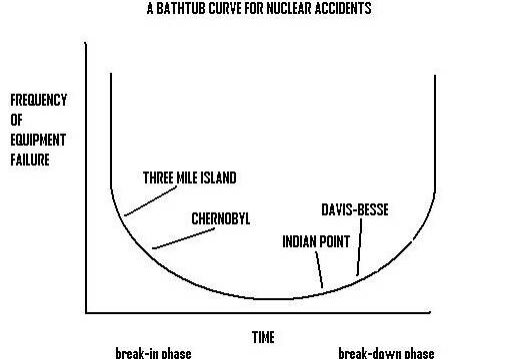A bathtub curve for nuclear reactor accidents

“Bathtub” curve refers to the shape of the lines on the following graphs:
Generic “bathtub” curve for increased risk of technology failures, “from toasters to atomic reactors,” as David Lochbaum (retired Union of Concerned Scientists nuclear engineer) has put it. Break-in phase risks when engineered systems are new include operator error from inexperience operating the new technology, undetected “bugs in the design,” etc. Breakdown phase risks when engineered systems are old and include the breakdown of vital systems, structures, or components due to age-degradation.
“Bathtub” curve for atomic reactor accidents, with examples given as data points. The breakdown phase accidents, Davis-Besse and Indian Point, refer to the Hole-in-the-Head (vessel closure head degradation) fiasco, and a blown steam generator tube, respectively. If the Davis-Besse head had ruptured, or a steam generator tube cascading failure had occurred — and these near-misses came precariously close — catastrophic releases of hazardous radioactivity could have escaped into the environment, due to the resultant reactor core meltdowns.
Thank you to David Lochbaum for providing the images above, and for his educational efforts re: the increased frequency of atomic reactor accident risks during both the break-in and breakdown phases.
Support Beyond Nuclear
Help to ensure a safer, greener and more just world for all

